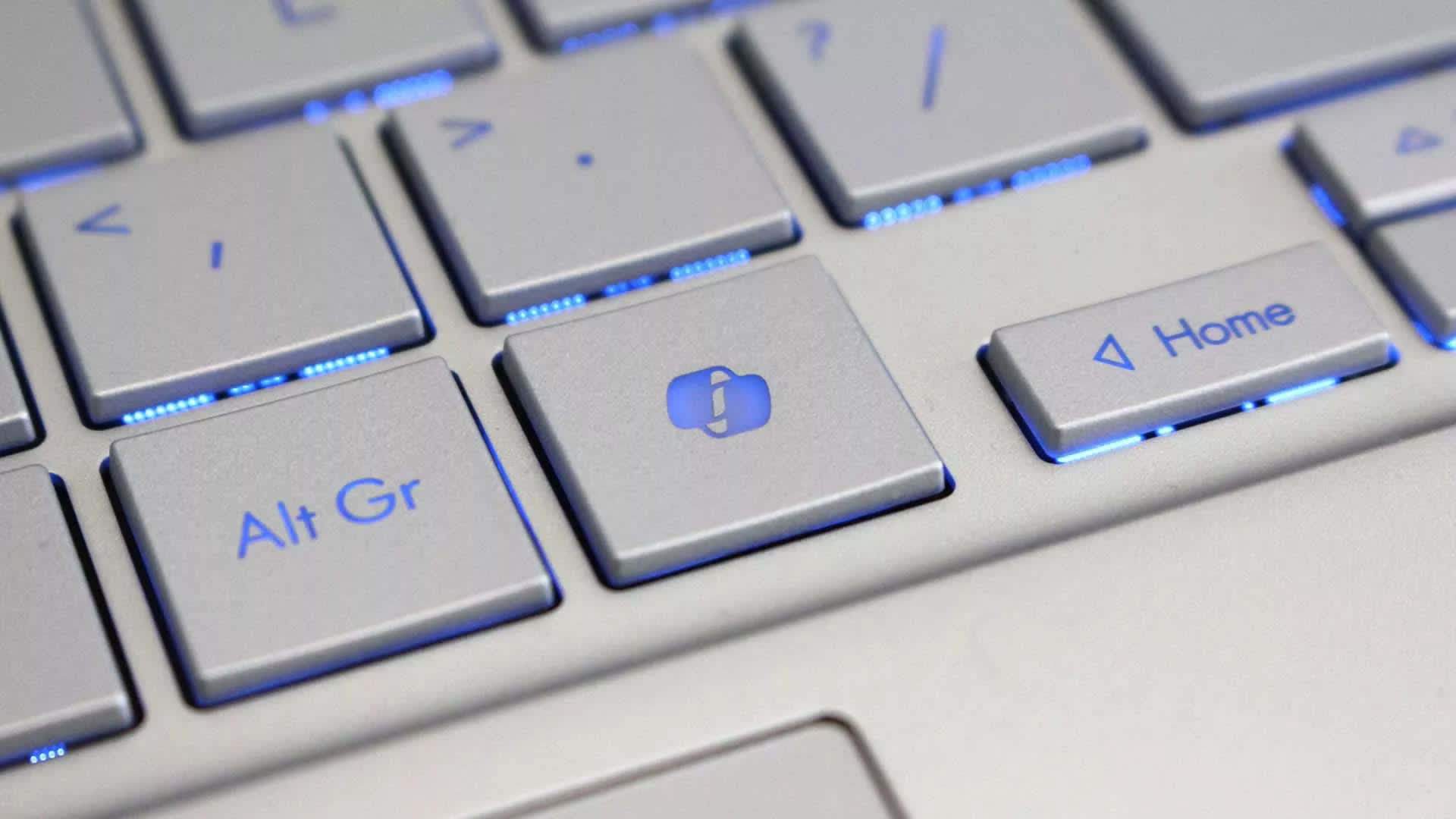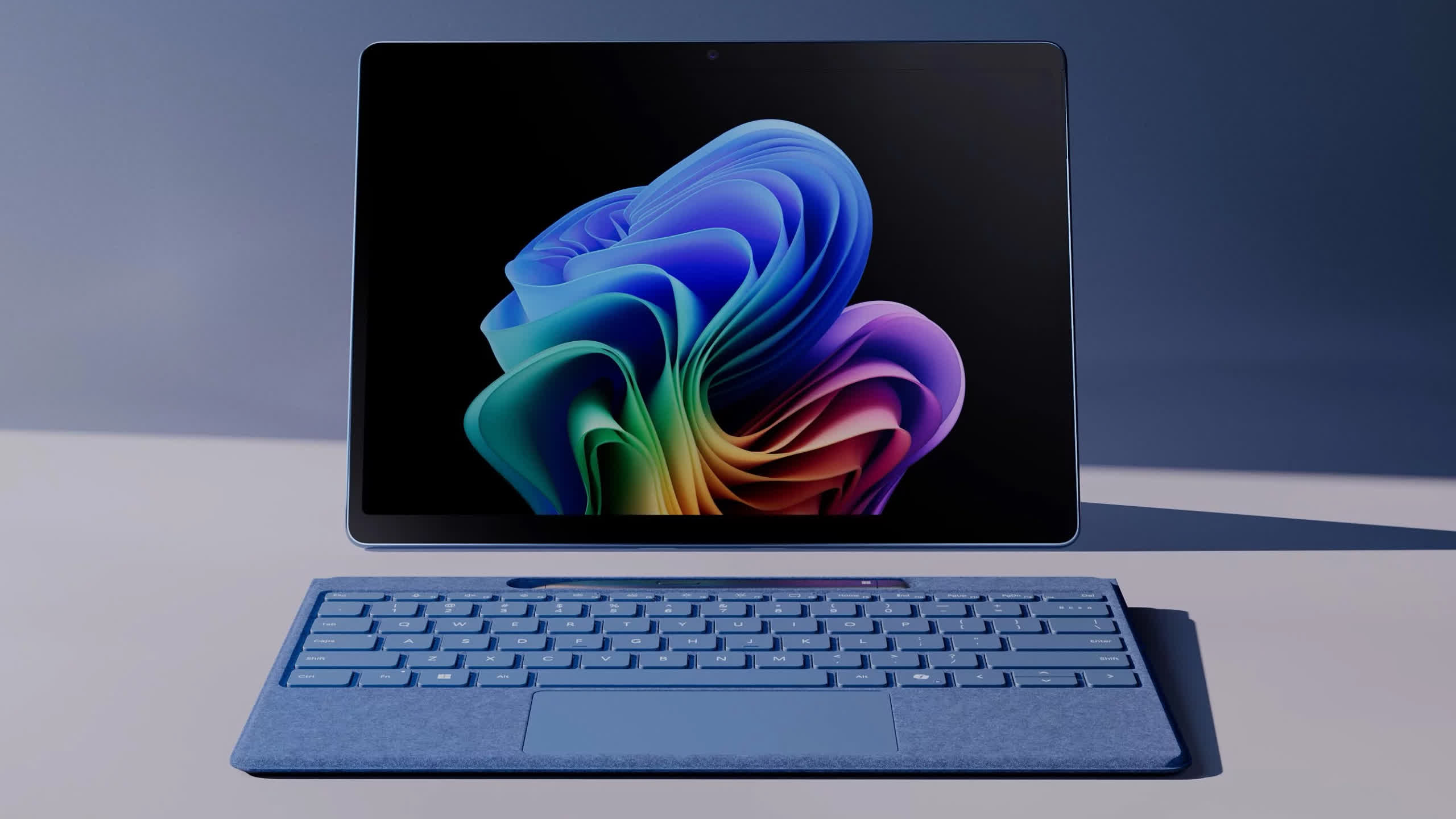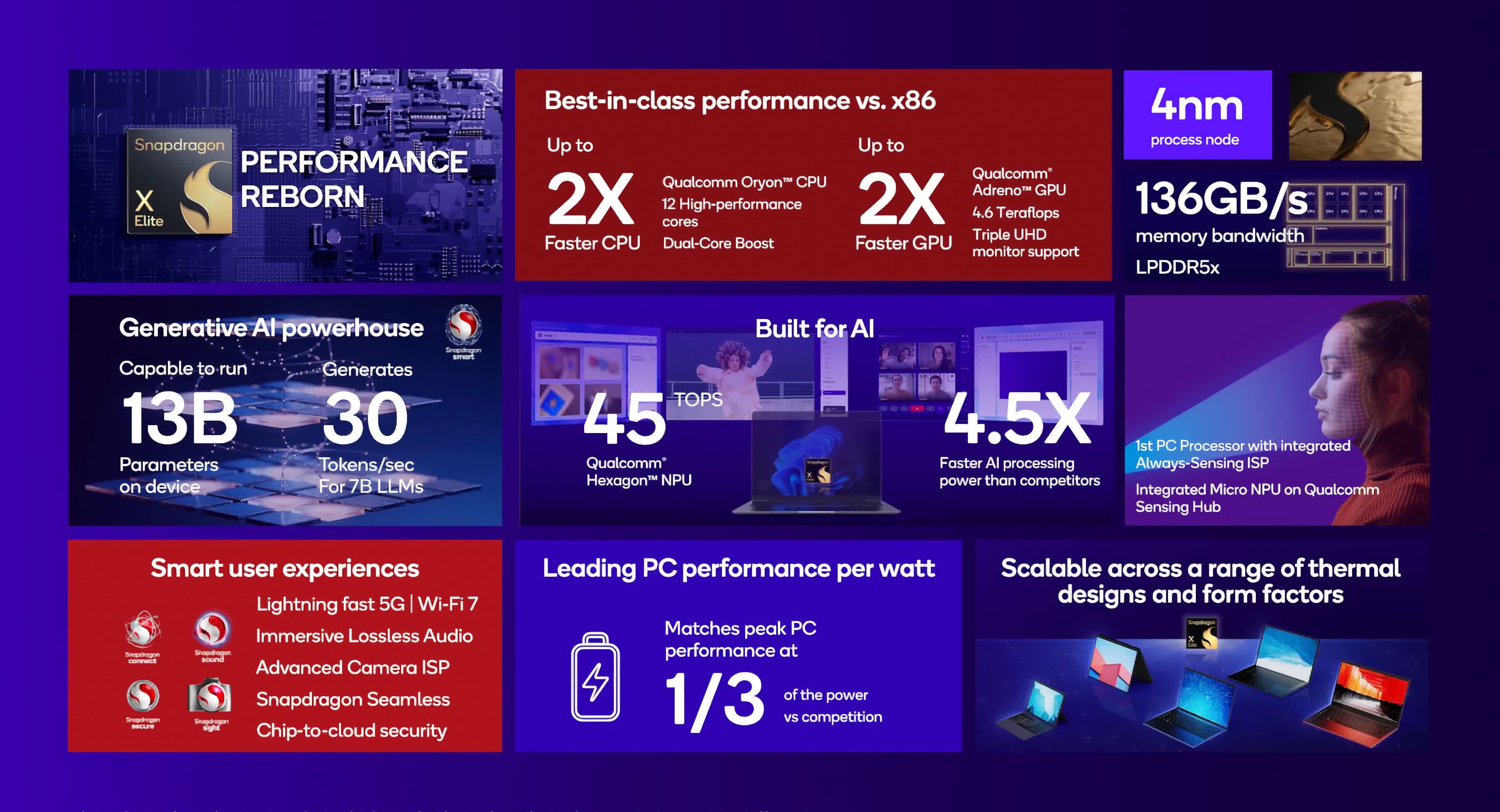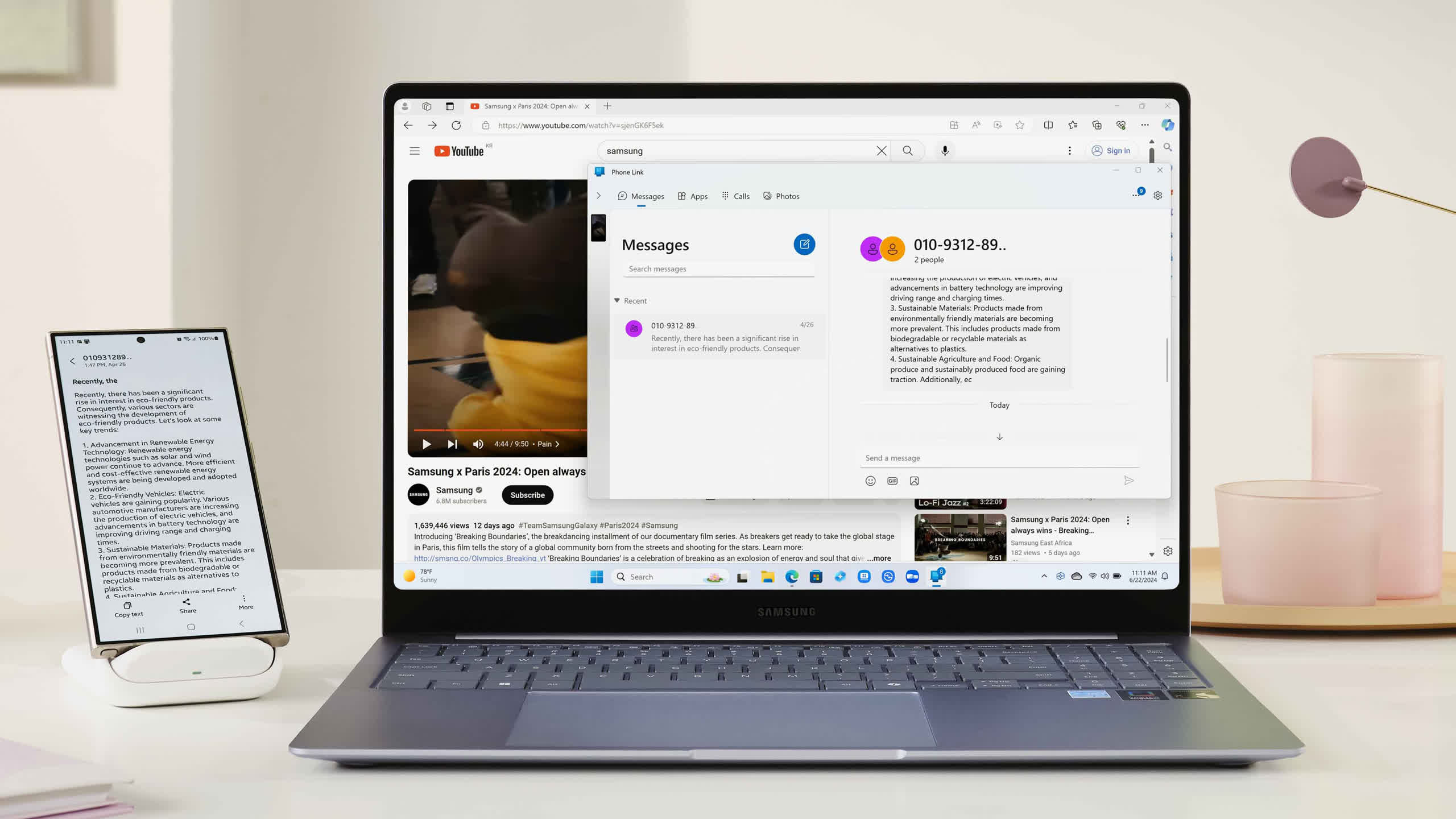Something to look forward to: Even though it's only been two months since they were first announced and just a month since they've shipped, Copilot+ PCs are already having a noticeable impact on the PC market. Major OEMs like Dell, HP, Lenovo, and Microsoft's Surface group have released slick new NPU-accelerated "AI PCs." Other vendors such as Samsung, Acer, and Asus have also joined with impressive new devices.
Most early reviews, along with my personal experience with four Qualcomm Snapdragon X Elite-powered machines, highlight that even though most of the AI software is still in its infancy, the extended battery life of these new PCs is a breath of fresh air.
What's particularly interesting is that these new Arm-based machines are creating a new benchmark against which other PCs are being compared. That's a huge win for both Qualcomm and Microsoft, as it shows that their long, hard-fought efforts to redefine the Windows PC experience are already paying off.
Of course, the most important part of that redefinition was supposed to be AI-related. However, with the delay of Windows' Recall feature for these PCs, that vision has yet to be realized. Additionally, many of the early Copilot+ software experiences and applications are of limited use for most people, making the AI side of the Copilot+ story a bit of a bust. At least, so far.
But it was relatively easy to predict, even from the earliest hints of these devices, that the AI story would need time to develop. As with most major hardware innovations, you need the hardware in place for a while before you start seeing the software innovations and experiences that we're all hoping AI will bring to the PC.
In the case of Recall, it will be interesting to see how well it works in real life, how quickly (or not) people adapt to it, and what security or privacy concerns may arise from its use. Beyond Recall, I'm most excited about AI software opportunities like personalized versions of RAG (Retrieval Augmented Generation) applications, on-device small language models, and intelligent agents that can finally start to fulfill the promises of early digital assistants (that never delivered).
These applications involve creating more intelligence and insights about my own data, documents, and calendar, making my PC experience easier, more rewarding, and more intelligent. Simple versions of these applications are on their way, but I fully expect it to be a year or more before we see experiences that truly change people's minds about what AI on a PC can do.
Even without advanced AI capabilities, the performance of the early Snapdragon X Elite machines is better than many expected. Performance benchmarks compared to existing x86 machines and M3-powered Macs have met or even slightly exceeded the lofty expectations set by Qualcomm and Microsoft.
Even more impressive is the application compatibility – with the notable exception of gaming titles – which has been better than many had hoped. I tested several obscure music-related applications, including VCV Rack 2, which emulates modular synthesizers in software, and they worked with no issues.
There are certainly a few remaining holes for some important titles from Adobe and others that need to be updated to Arm compatibility, but the overall situation is better than what many feared it could be. Plus, it turns out developers need to specifically block Microsoft's Prism emulator from running in order for it not to try and work.
In other words, software vendors must go out of their way to make an effort to prevent emulation of x86 apps on the Qualcomm Arm-based chips. In a weird way, I'd argue that's a good thing because most app developers are unlikely to make that effort so most apps will likely take advantage of the emulation and should just run.
One of the other interesting fallouts from the new reference point that these first Qualcomm-powered Copilot+ PCs have created, however, is a new target against which competitors can compare themselves. This is quickly becoming very relevant in the world of Copilot+ PCs because both AMD (see "AMD leaps into Copilot+ PCs") and Intel (see "Intel strikes back: Pat Gelsinger outlines Intel's future") have announced that their new Copilot+ AI chips are coming shortly.
In fact, the first PC using AMD's Ryzen AI 300 SoC was just announced last week by HP. The new Omnibook Ultra, expected to ship in early August, features a new Zen5-based CPU core and a third-generation NPU that offers 55 TOPs of performance – 10 more than the Snapdragon X Elite.
AMD and HP are also claiming up to 21 hours of battery life, which is higher than existing x86-based notebooks and theoretically puts it within the range of the Arm-based Qualcomm machines. Real-world testing will be needed to verify those claims and make those comparisons, but this is particularly important given the attention the battery life has been getting on the Snapdragon X Elite platforms.
For its part, Intel is expected to provide additional details about the performance its Copilot+-compatible Lunar Lake platform at the upcoming IFA show in Berlin in early September. Qualcomm is rumored to have plans for PC-related announcements of its own at IFA as well.
One of the little-understood challenges of writing initial AI software for PCs is that it has to be adapted individually to Qualcomm, AMD, and Intel NPUs, all of which are architected in unique ways and function differently.
One early challenge for initial Ryzen AI 300 and Lunar Lake PCs is that they will initially be "Copilot+-Ready," meaning the software from Microsoft won't be ready and the NPU-powered apps and services in Windows won't work until a software update is issued. While there's no firm date for when that update will happen, it's expected to be before the end of the calendar year.
It's important to note that it's not just the x86 side of the code; much of the labor required is to port the NPU software to each company's architecture. One of the little-understood challenges of writing initial AI software for PCs is that it has to be adapted individually to Qualcomm, AMD, and Intel NPUs, all of which are architected in unique ways and function differently.
Once baseline support for each of these architectures is embedded into core Windows elements such as DirectML and ONNX Runtime, the process should be much easier, but there's a fair amount of work to make that happen.
Not to be left out of the equation, Nvidia is also working with Microsoft to bring AI apps built with the PyTorch framework onto PCs with RTX-based Nvidia GPUs. The interesting twist here is that GPUs like the RTX 4090 can offer over 600 TOPs of performance on laptops and over 1,300 TOPS (!) on desktop systems.
Of course, the power draw for discrete GPUs is significantly higher than NPUs or even TPUs which means using them won't be realistic for many of the existing Copilot+ Windows tasks and apps, but for AI applications that require quick bursts of performance (photo, video, and audio editing), they could be a great solution.
The bottom line takeaway is that we're already seeing a number of very interesting shifts and redefined comparisons in the Copilot+ PC era and given the pace of innovation that's already on tap, I expect to see significantly more in the months and years to come.
Bob O'Donnell is the president and chief analyst of TECHnalysis Research, LLC, a market research firm that provides strategic consulting and market research services to the technology industry and professional financial community. You can follow Bob on Twitter @bobodtech




